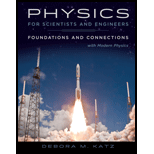
Concept explainers
(a)
The amount of heat that need to flow into Zan to completely melt his body.
(a)
Answer to Problem 84PQ
The amount of heat that need to flow into Zan to completely melt his body is
Explanation of Solution
Zan is initially existing as ice at temperature
In order Zan to completely melt his body, first the
Write the expression for the heat corresponding to temperature change.
Here,
Write the expression for the heat required for phase transition from solid to liquid.
Here,
Write the expression for the total heat absorbed by the body in the process.
Conclusion:
Substitute
Substitute
Substitute
Therefore, the amount of heat that need to flow into Zan to completely melt his body is
(b)
The amount of additional heat required to make the water form of Zan’s body to become vapor at
(b)
Answer to Problem 84PQ
The amount of additional heat required to make the water form of Zan’s body to start vaporizing at
Explanation of Solution
Initial temperature of water is
Write the expression for the heat corresponding to the temperature change.
Conclusion:
Substitute
Therefore, the amount of additional heat required to make the water form of Zan’s body to start vaporizing at
(c)
The amount of additional heat required to make the
(c)
Answer to Problem 84PQ
The amount of additional heat required to make the
Explanation of Solution
The mass of water is
Write the expression for the heat corresponding to the phase transition from liquid to vapor.
Here,
Conclusion:
Substitute
Therefore, the amount of additional heat required to make the
(d)
The average kinetic energy of one of water vapor molecule that make up Zan.
(d)
Answer to Problem 84PQ
The average kinetic energy of one of water vapor molecule that make up Zan is
Explanation of Solution
The temperature of the water vapor is
Write the expression for the average kinetic energy of one molecule of water vapor.
Here,
Conclusion:
Substitute
Therefore, the average kinetic energy of one of water vapor molecule that make up Zan is
Want to see more full solutions like this?
Chapter 21 Solutions
Webassign Printed Access Card For Katz's Physics For Scientists And Engineers: Foundations And Connections, 1st Edition, Single-term
- The rectangular loop of wire shown in the figure (Figure 1) has a mass of 0.18 g per centimeter of length and is pivoted about side ab on a frictionless axis. The current in the wire is 8.5 A in the direction shown. Find the magnitude of the magnetic field parallel to the y-axis that will cause the loop to swing up until its plane makes an angle of 30.0 ∘ with the yz-plane. Find the direction of the magnetic field parallel to the y-axis that will cause the loop to swing up until its plane makes an angle of 30.0 ∘ with the yz-plane.arrow_forwardA particle with a charge of − 5.20 nC is moving in a uniform magnetic field of (B→=−( 1.22 T )k^. The magnetic force on the particle is measured to be (F→=−( 3.50×10−7 N )i^+( 7.60×10−7 N )j^. Calculate the y and z component of the velocity of the particle.arrow_forwardneed answer asap please thank youarrow_forward
- 3. a. Determine the potential difference between points A and B. b. Why does point A have a higher potential energy? Q = +1.0 C 3.2 cm 4.8 cm Aarrow_forwardPls help ASAParrow_forward1. Explain the difference between electrical field, potential difference, and electrical potential differencearrow_forward
- Pls help ASAParrow_forward9. When an electron moves into a uniform and perpendicular magnetic field, it will.. a. Accelerate parallel to the magnetic Field until it leaves b. Accelerate in a circular path c. Accelerate perpendicular to both the magnetic field and its original direction d. Repel back into the electric field 10. If a proton at rest is placed in a uniform magnetic field with no electric or gravitational field around, the proton will…….. a. Accelerate in the direction of the magnetic field b. Accelerate in a direction perpendicular to the magnetic field c. Move in a circular path d. Not acceleratearrow_forward7. The electric field at a distance of 1.0 mfrom a charged sphere is 100 N/C. At what distance from thesphere will the electric field be 50 N/C? a. 1.1 m b. 1.4 m c. 2.0 m d. 4.0 m 8. The electric potential due to a point charge at a point depends on a. The direction of the electric field b. The distance from the point charge c. The velocity of the point charge d. The mass of the point chargearrow_forward
 Physics for Scientists and Engineers: Foundations...PhysicsISBN:9781133939146Author:Katz, Debora M.Publisher:Cengage Learning
Physics for Scientists and Engineers: Foundations...PhysicsISBN:9781133939146Author:Katz, Debora M.Publisher:Cengage Learning Principles of Physics: A Calculus-Based TextPhysicsISBN:9781133104261Author:Raymond A. Serway, John W. JewettPublisher:Cengage Learning
Principles of Physics: A Calculus-Based TextPhysicsISBN:9781133104261Author:Raymond A. Serway, John W. JewettPublisher:Cengage Learning College PhysicsPhysicsISBN:9781938168000Author:Paul Peter Urone, Roger HinrichsPublisher:OpenStax College
College PhysicsPhysicsISBN:9781938168000Author:Paul Peter Urone, Roger HinrichsPublisher:OpenStax College An Introduction to Physical SciencePhysicsISBN:9781305079137Author:James Shipman, Jerry D. Wilson, Charles A. Higgins, Omar TorresPublisher:Cengage Learning
An Introduction to Physical SciencePhysicsISBN:9781305079137Author:James Shipman, Jerry D. Wilson, Charles A. Higgins, Omar TorresPublisher:Cengage Learning
 Physics for Scientists and Engineers, Technology ...PhysicsISBN:9781305116399Author:Raymond A. Serway, John W. JewettPublisher:Cengage Learning
Physics for Scientists and Engineers, Technology ...PhysicsISBN:9781305116399Author:Raymond A. Serway, John W. JewettPublisher:Cengage Learning





